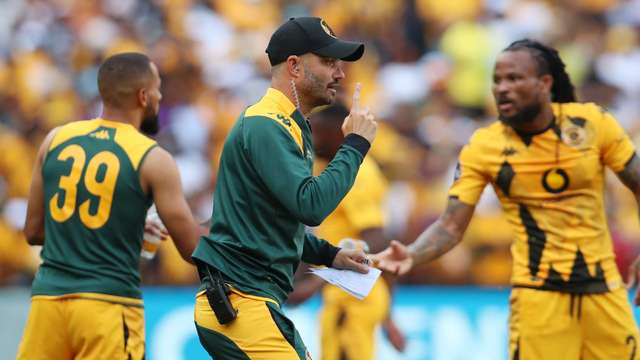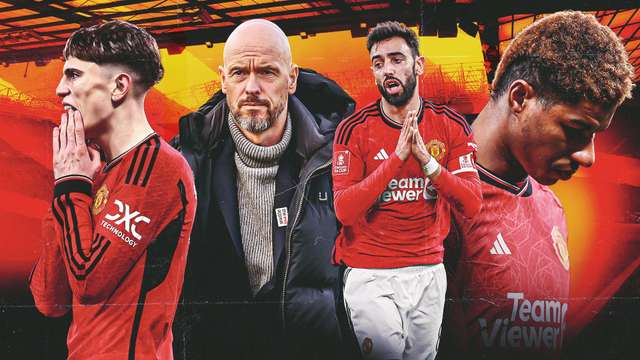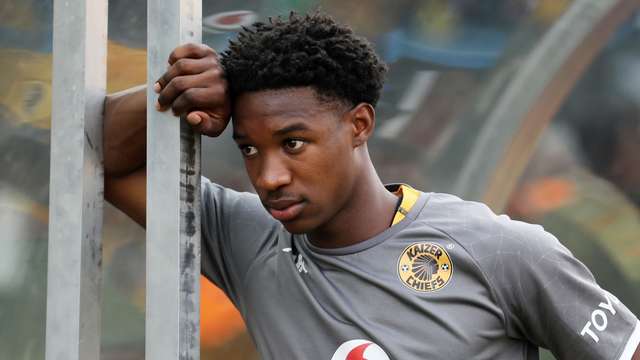This game was a crucial clash in the race for African Cup of Nations 2019 qualification, with the home side needing a win to secure their path to the showpiece with a game to spare. Away side, Nigeria, needed just a draw to progress by virtue of their head-to-head record against Libya, having beaten the North Africans 4-0 and 3-2, the latter a mightily impressive victory away from home.
A draw or a defeat for South Africa would make little difference if Libya won away in the Seychelles – which they did by an incredible 8-1 margin in the end – as both results would mean that Stuart Baxter’s men would need a draw away to Libya in March to make it to Cameroon 2019.
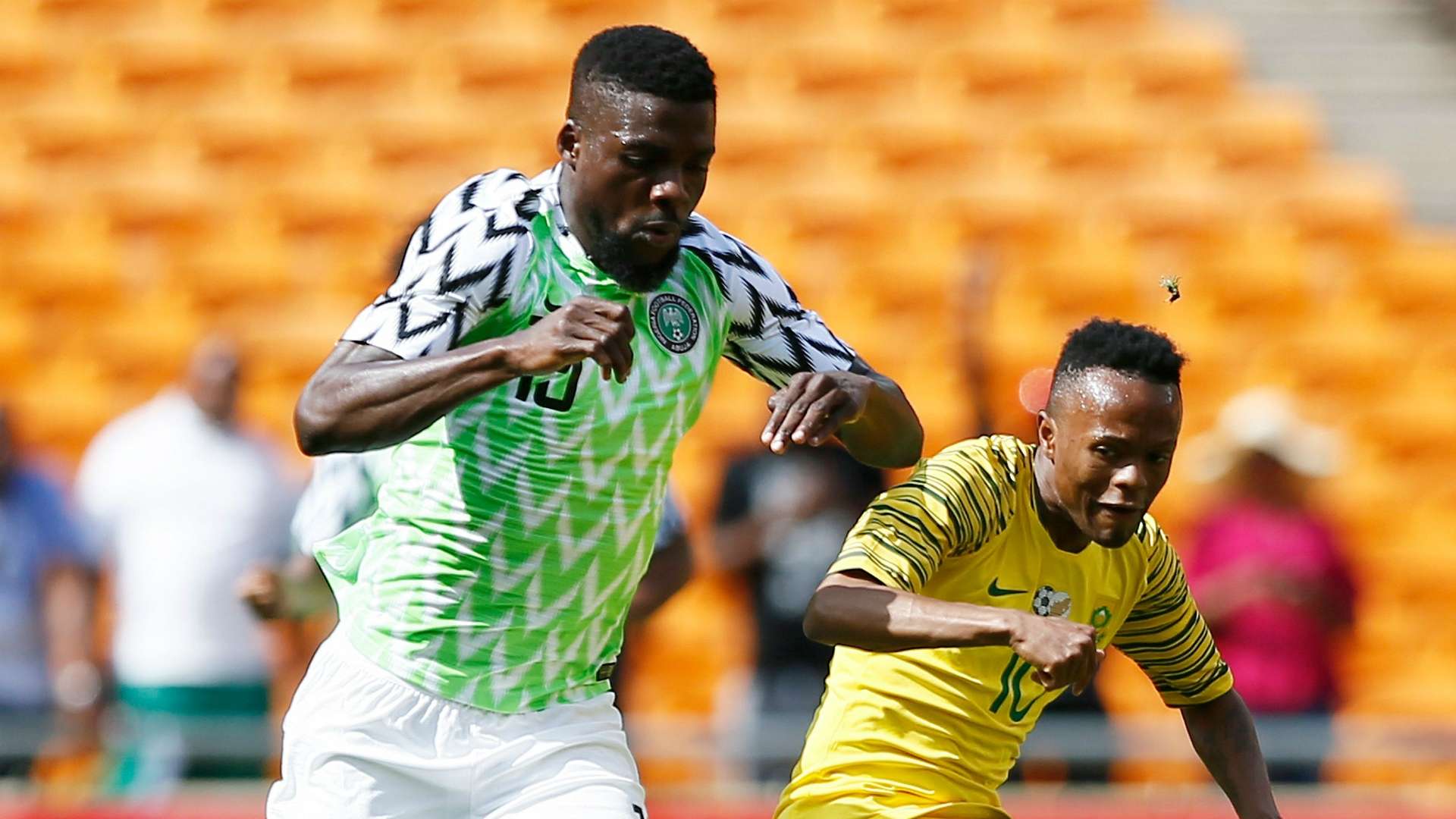 Getty Images
Getty Images
Team Selection:
Bafana Bafana came into this game with some serious question marks over their engine room, with all of Dean Furman, Bongani Zungu and Kamohelo Mokotjo out injured, as well as Keagan Dolly.
Baxter decided to go with his safest and most experienced available pairing in front of the back four, selecting the Mamelodi Sundowns duo of Hlompho Kekana and Tiyani Mabunda. A riskier selection would have been to plump for Fortune Makaringe, whose extra athleticism and ability to drive forward from deep areas, due to his early days as a winger, would have tested a weakened Super Eagles midfield.
The other major calls from Baxter were to go for Thamsanqa Mkhize over Ramahlwe Mphahlele at right back, and to start Thulani Serero, whose return to the squad has come after some strong form for Vitesse as a deep-lying playmaker. Percy Tau and Lebo Mothiba were both selected, but a genuine front two is rarely favoured by the current coach, so Tau’s position was a question mark pre-game.
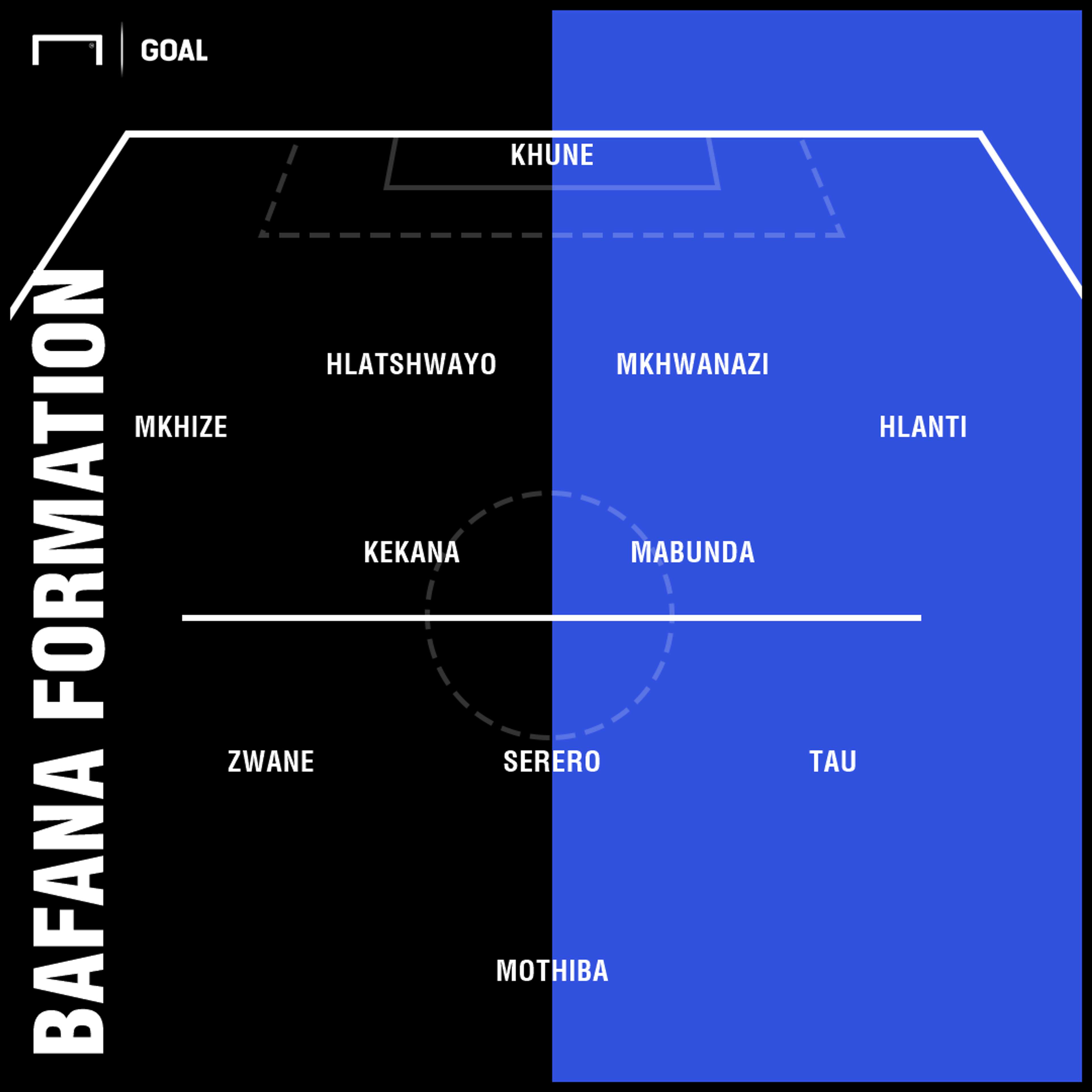
Nigeria were also missing several of their usual starters, with goalkeeper Francis Uzoho out with a rib injury, Wilfred Ndidi missing through suspension, John Obi Mikel not selected and Odion Ighalo, with six goals in the last three qualifiers, withdrawing through injury. This added to the question marks over the side’s formation, at fullback, and over the position of Alex Iwobi.
In the end, coach Gernot Rohr switched to a 3-5-2 formation, using Kenneth Omeruo on the left of the back three and winger Samuel Kalu as a right wingback. This change allowed both a three-man central midfield, with Iwobi in a central role again, as he was for the last two qualifiers, and two strikers. Ahmed Musa was able to play as a wide forward, where he could focus on attacking and not tracking the opposition right back, with Kelechi Iheanacho as Ighalo’s replacement.
Israel-based, John Ogu was Ndidi’s replacement as defensive midfielder, and in goal, Chippa United’s Daniel Akpeyi was expected to start. But Rohr made a big call by selecting Ikechukwu Ezenwa ahead of both Akpeyi and club teammate Theophilus Afelokhai, who is Enyimba’s usual first choice.
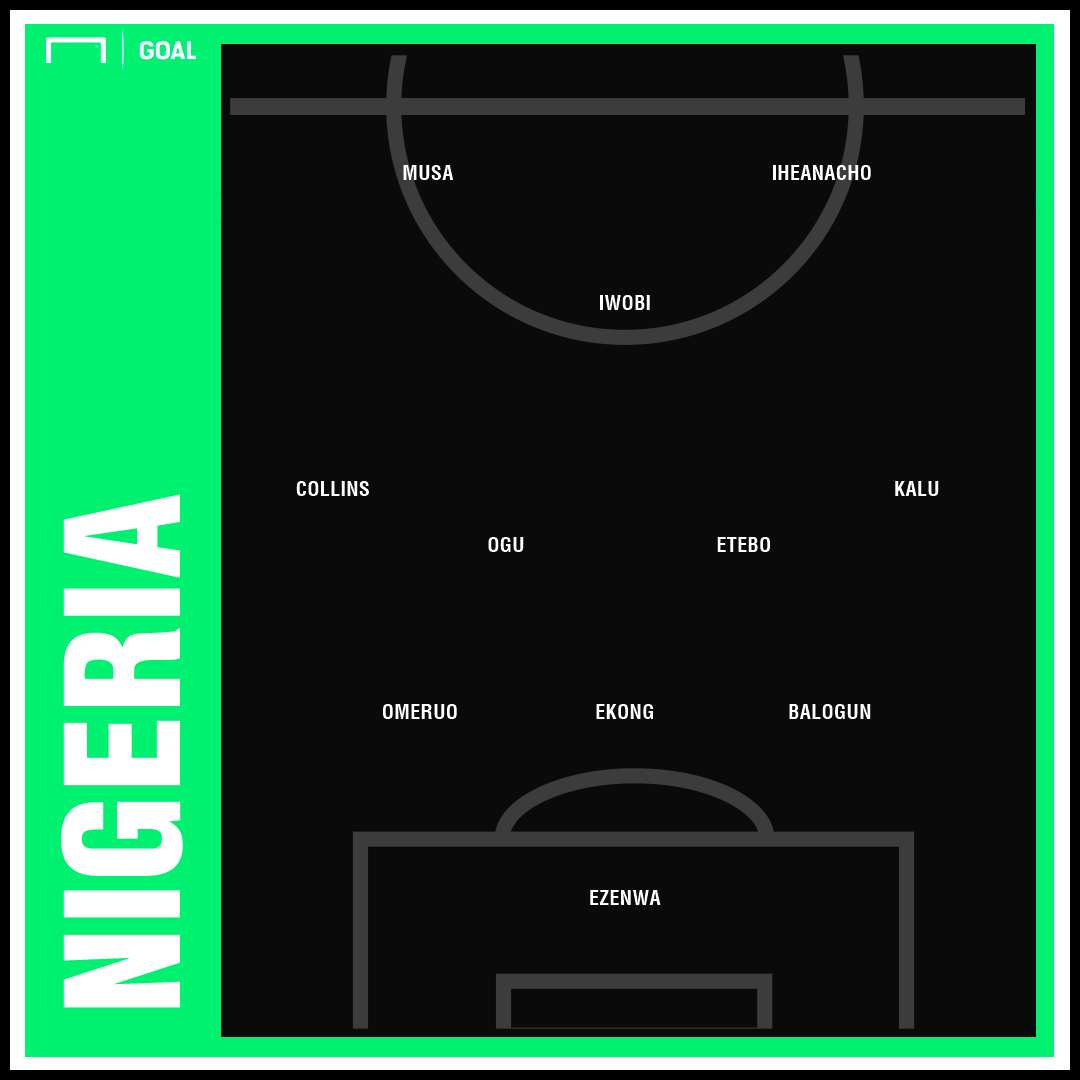
First Half – Baxter Solves Initial Problems
Nigeria looked the better of the two sides in the game, not only taking the lead in the 9th minute, but having another clear opportunity as Iheanacho played Musa through on goal, but an offside flag had been erroneously raised.
Bafana were clearly confused by Nigeria’s shape – the fullbacks, Hlanti and Mkhize were reluctant to close down the wingbacks, for fear of leaving their centre backs two vs. two against Nigeria’s pacey strike pairing. Additionally, Kekana and Mabunda were both sitting deep against Iwobi, which gave Etebo and Ogu plenty of space to build play against just Serero, especially with the away side also having three central defenders against a lone striker in Mothiba.
The latter problem was a result of Tau’s usage as a wide player, often finding himself in very deep positions to help Hlanti, including one example was when he was shoved off the ball by Iheanacho 15-yards into his own half. Tau has played mostly on the left at club level this season, but it is far from his most effective position.
When the goal did come, it was as a result of Hlanti being left isolated against the pacey Kalu. With neither of Bafana’s defensive midfielders comfortable in shifting over to help as they were aware of Iwobi’s threat, as well as the possibility of Iheanacho dropping into deep areas (as he had done in creating Musa’s “offside” chance), it meant Kalu could blaze past Hlanti and force Buhle Mkhwanazi into an own goal.
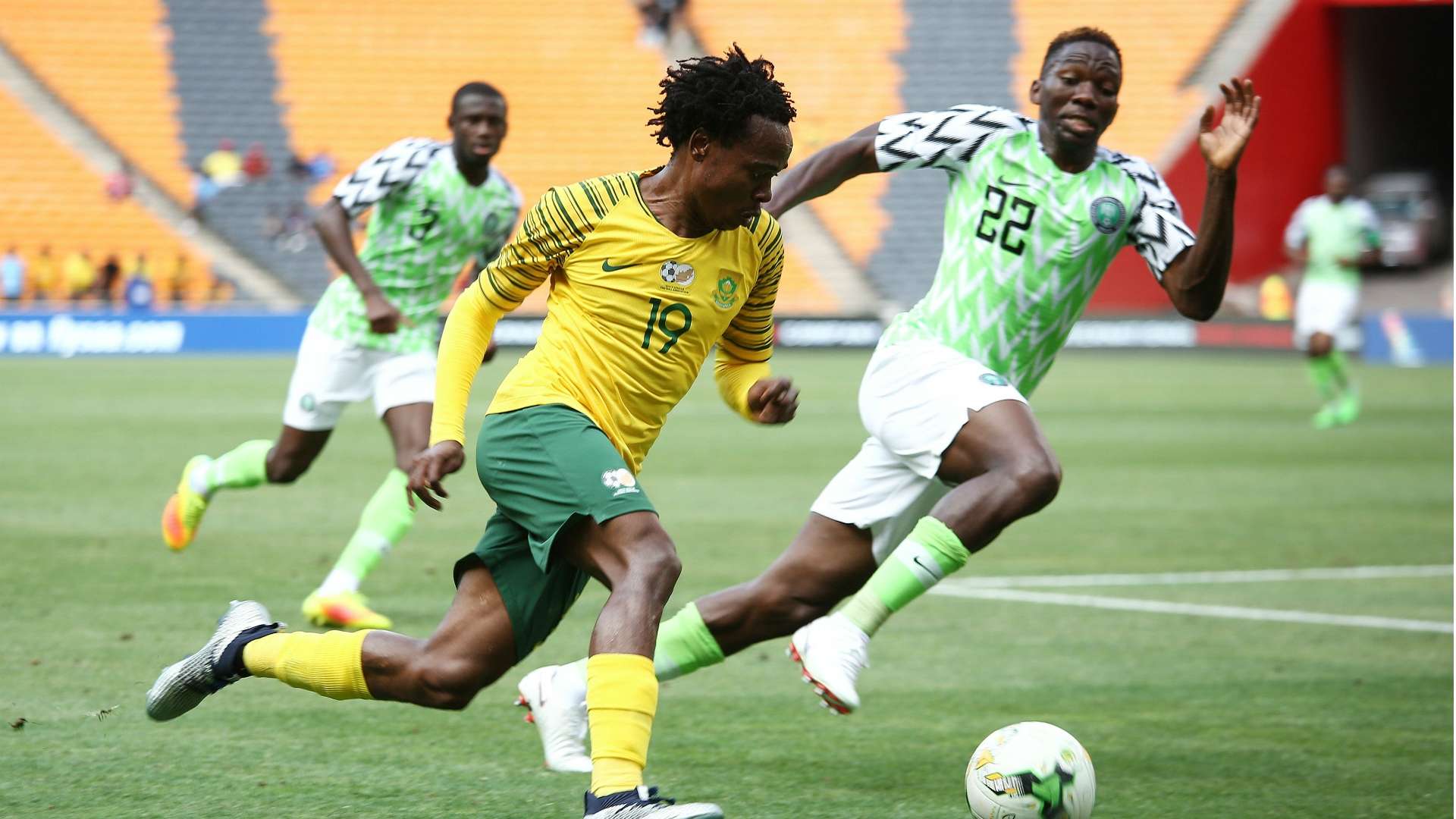 Getty Images
Getty Images
The major change by Baxter around the 15-minute mark was to switch Tau over to the right side where he was on the side of Jamilu Collins, a less threatening wingback than Kalu. Tau immediately started to get on the ball, and on the right flank, he could carry the ball inside on the furthest foot from the defenders and protect it from pressure with his right arm. With Mhkize and Hlanti now instructed to bomb forward, Nigeria had real issues in wide areas as Omeruo looked uneasy having to move wide to face Tau on that flank, and with Balogun forced to stay narrow to help Ekong, Kalu was stationed much deeper.
Brilliant play from Tau created the equaliser as he showed his class coming inside to link with Themba Zwane. With those two players now able to cut inside with the full-backs offering width, their chemistry from Sundowns came to the fore. Nigeria were still massive threats as twice Khune had to race off his line to beat speed merchant Musa to the ball, and with Nigeria’s front two, plus Iwobi, stopping Khune from playing short from goalkicks, the goalkeeper had to try risky dinked passes into midfield and one such delivery saw a turnover and The Super Eagles had a clear open opportunity wasted by a heavy Iheanacho touch with just Khune to beat.
The rest of the half petered out somewhat as the 32-degree heat took its toll. Despite long delays over throw-ins and several fouls, the referee played no additional time and the sides went in level. Nigeria had been the bigger threat, but Tau’s growing influence and impressive assist had pulled Bafana back into the game. Baxter’s move after 15 minutes had worked well.
Second half – tempo drops, Tau supply cut
At the start of the second half, Tau was initially back on the left, but was later moved into a role just off Mothiba as Thembinkosi Lorch replaced Thulani Serero after an hour, and moved out onto the right flank.
Nigeria had made a crucial switch in dropping Iwobi deeper to a role in a flatter three-man central midfield, where he could shore up the left flank and give some protection to Omeruo and Collins. This meant that Kekana and Mabunda began to get more chances to receive the ball and face forward, but neither generally played the driven, floor passes into Tau that he needed, but rather longer diagonals out to the full-backs or over the top. This led to numerous attacks breaking down.
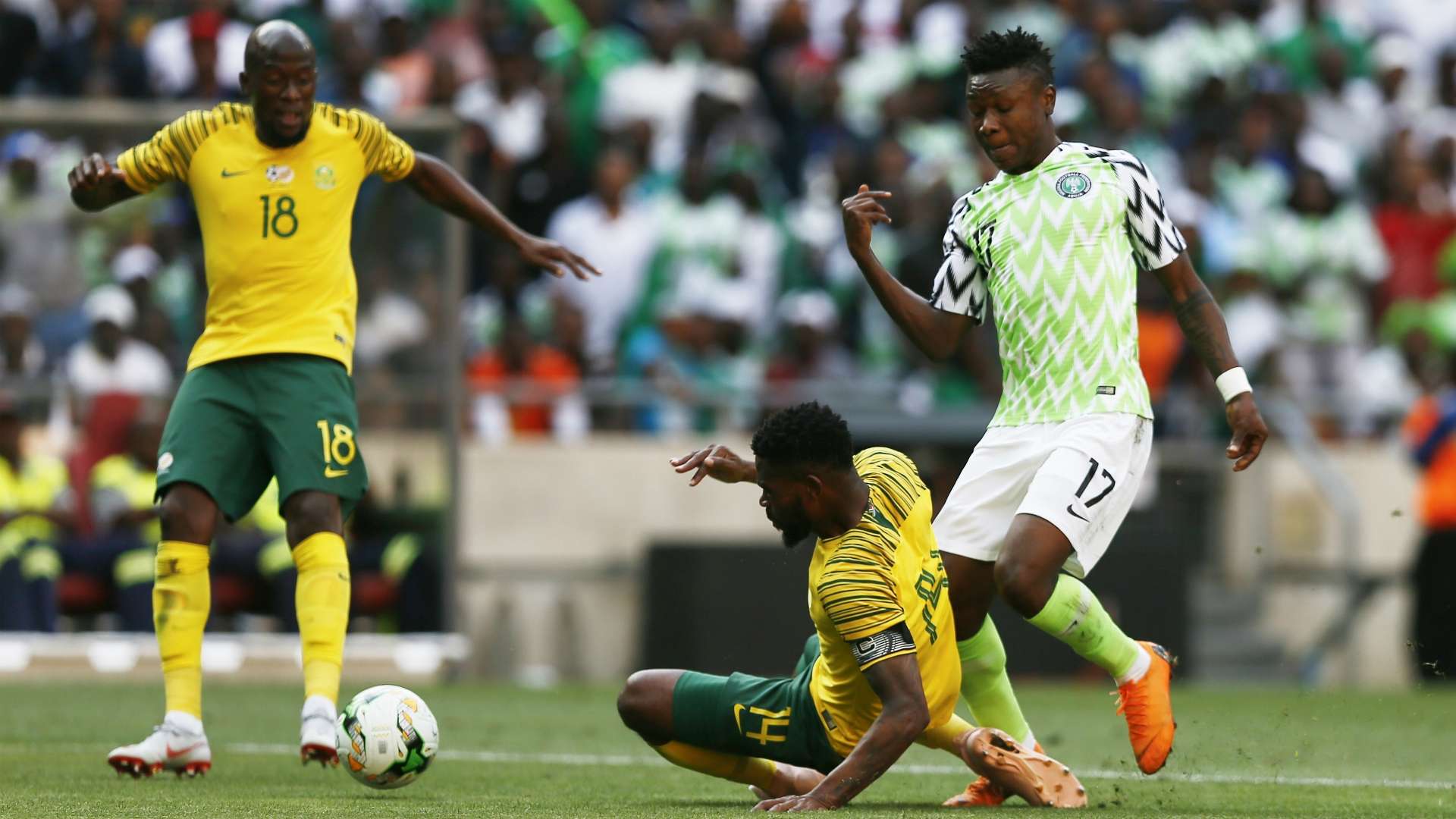 Getty Images
Getty Images
With the tempo of the game now much lower, and the ball spending lots of time out for throw-ins, Nigeria looked settled defensively, but also less of a threat on the break with South Africa playing deeper to protect themselves against Musa. Once Isaac Success came on for Iheanacho, Nigeria had more of a route one option and his ability to hold the ball up and draw fouls, allowed the sting to be taken out of the game even further. By the 75-minute mark, Bafana had run out of ideas and energy, and desperately needed some inspiration from the bench by Baxter. Instead, the game drifted away and possible match-winners like Vincent Pule and Dino Ndlovu were left to watch from the sidelines.
Nigeria easily saw out the game, dealing well with South Africa’s constant long passes to try to find Tau or Mothiba. Omeruo, who had struggled against Tau in the first half, barely had to deal with him in the second period and was able to rather fight in the aerial duels instead of being exposed on the ground. Nigeria saw themselves incorrectly flagged offside again in the latter stages when Musa finished past Khune, which was a goal that should have stood.
Summary
This draw for Bafana had the same effect that a defeat would have had – Baxter’s men now need to draw against Libya in the final game. For this reason, the conservative second half was a massive disappointment.
Any supporter watching the game would not have known from the home side’s attitude that they needed to win. South Africa’s coach admitted his side’s lack of ideas in his post-match interview saying: “in the second half, we started going really long”, but it begs the question why he didn’t risk bringing on Teboho Mokoena for Mabunda to improve passing in deeper areas, or give Pule – a high-risk, high-reward player who shoots and crosses constantly – at least 15 minutes to try to force a winner.
Nigeria had a tough period from the 15th to 45th minute, but still created clear chances during that time, and when the two blatantly wrong offside calls are factored in, the away side were far more worthy of winning the game than Bafana Bafana. Rohr did a good job of reorganising his side in the second period by asking more defensively of Iwobi, and his side showed excellent game management by slowing proceedings down and breaking any momentum for the home side by making fouls and drawing fouls.

